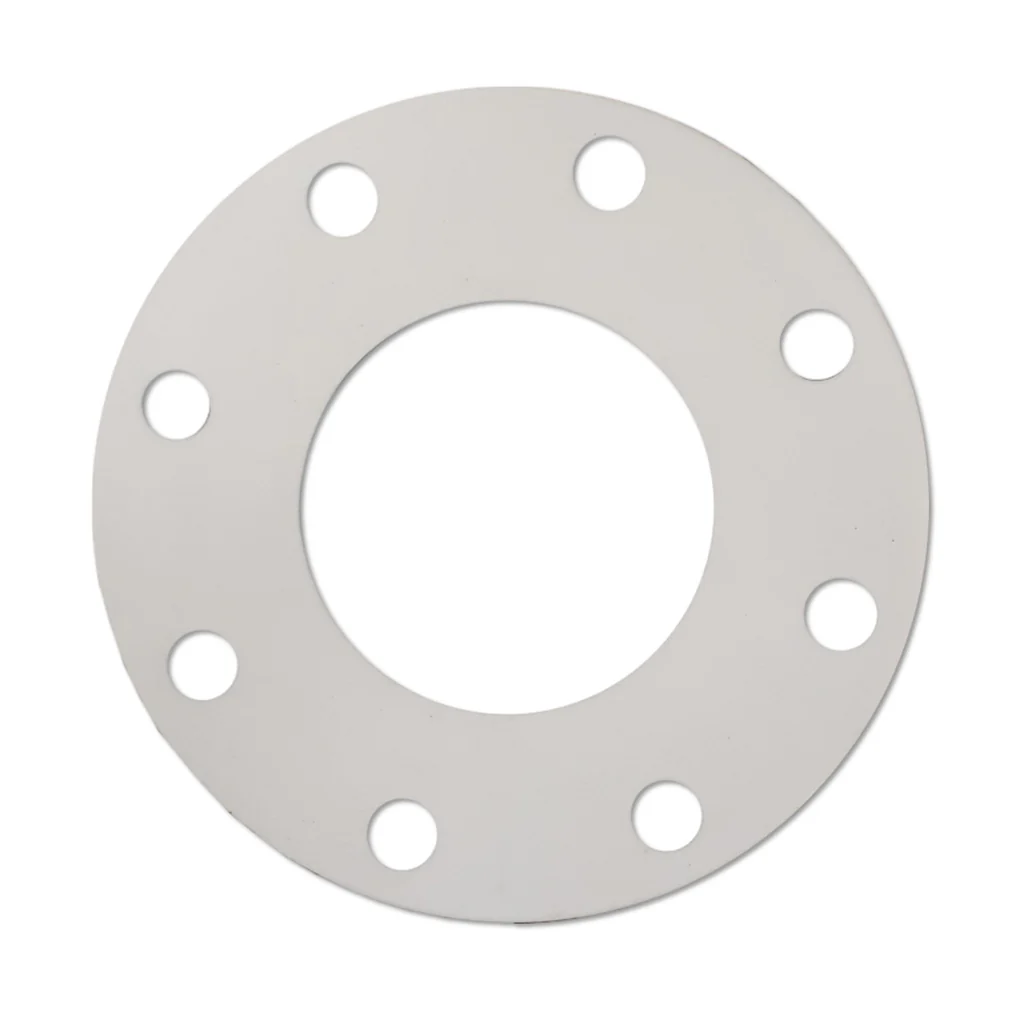Ever wondered what keeps your industrial equipment leak-free under intense pressure or heat? Gaskets are the unsung heroes of the industrial world, and choosing the right material can make all the difference. Today, we’re diving into a hot debate: graphite vs. PTFE gaskets. Both are non-metallic gasket materials and fantastic options for extreme conditions, but they excel in different ways. Let’s break it all down!
What Are Gaskets?
Gaskets are like the peacekeepers of industrial systems. They sit between two surfaces, ensuring a tight seal to prevent leaks. Think of them as the glue that keeps everything running smoothly.
Why Material Matters in Extreme Conditions?
Extreme temperatures, pressures, and chemicals can wreak havoc on ordinary materials. That’s where high-performance gaskets, like graphite and PTFE, step in to save the day.
What Are Graphite Gaskets?
Graphite gaskets are made from compressed graphite flakes. Their unique structure allows them to withstand extreme conditions without breaking a sweat (or a seal).
Key Features of Graphite Gaskets
Heat resistance: These gaskets can handle temperatures over 450°C, making them ideal for high-heat environments.
Chemical compatibility: Resistant to a broad range of chemicals, graphite gaskets are perfect for aggressive substances.
Flexibility: Despite their toughness, they’re pliable enough to adapt to irregular surfaces.
Applications of Graphite Gaskets
From power plants to refineries, graphite gaskets are the go-to choice for high-temperature and high-pressure scenarios.

What Are PTFE Gaskets?
PTFE (a.k.a. Teflon®) gaskets are made from a synthetic fluoropolymer known for its non-stick and chemically inert properties.
Key Features of PTFE Gaskets
Chemical inertness: PTFE doesn’t react with most chemicals, making it a reliable choice for corrosive environments.
Non-stick properties: These gaskets are smooth and resist sticking, ensuring easy removal.
Temperature limits: They can handle up to 260°C, which is lower than graphite but still impressive.
Applications of PTFE Gaskets
Common in food processing, pharmaceuticals, and chemical industries, PTFE gaskets shine in scenarios requiring cleanliness and chemical resistance.

Graphite Gaskets:
Graphite excels in high-temperature environments, tolerating temperatures over 450°C, and sometimes even higher when reinforced. This makes it a go-to material for power plants, oil refineries, and other heat-intensive industries.
PTFE Gaskets:
PTFE has a lower temperature tolerance, maxing out around 260°C. While not suitable for extreme heat, it works well in moderate temperature settings, especially where chemical resistance is key.
Winner: Graphite gaskets dominate in high-heat applications.
Graphite Gaskets:
Graphite resists a broad range of chemicals, but it can degrade in strong oxidizing environments like those involving concentrated nitric acid.
PTFE Gaskets:
PTFE is nearly impervious to most chemicals, including highly corrosive and oxidizing agents. Its chemical inertness makes it an excellent choice for environments where aggressive substances are present.
Winner: PTFE gaskets take the lead in chemically aggressive environments.
Graphite Gaskets:
While highly effective under extreme conditions, graphite can be brittle and prone to damage during handling or installation.
PTFE Gaskets:
PTFE is more robust and resistant to physical damage. Its low friction and non-stick properties also reduce wear, prolonging its lifespan.
Winner: PTFE gaskets are more durable in terms of physical handling and longevity.
Graphite Gaskets:
Typically, graphite gaskets are more cost-effective upfront, especially for high-temperature applications. However, their fragility can increase costs in terms of replacements and careful handling.
PTFE Gaskets:
PTFE gaskets tend to be pricier but offer long-term savings due to their durability and chemical resistance.
Winner: Graphite for upfront cost; PTFE for long-term value.
Graphite Gaskets:
Graphite is highly flexible and conforms to irregular surfaces, ensuring a reliable seal in high-pressure systems.
PTFE Gaskets:
PTFE gaskets are less flexible but still provide excellent sealing performance, especially in chemically aggressive and clean environments.
Winner: Graphite excels in high-pressure scenarios, while PTFE is more versatile for clean and chemical-resistant applications.
Operating Environment
Is it blazing hot? Go graphite. Battling corrosive chemicals? PTFE is your buddy.
Budget Constraints
Consider initial costs versus long-term performance to make an informed decision.
Required Specifications
Assess the specific needs of your application, like pressure, temperature, and chemical exposure.
Graphite gaskets are the go-to solution for industries where extreme temperatures and pressures are the norm.
1. Power Generation
Why Graphite? Its heat resistance and ability to handle high pressures make it perfect for sealing:
Steam turbines
Boilers
Heat exchangers
2. Oil and Gas
Why Graphite? Handles high-pressure systems and fluctuating temperatures in:
Pipelines
Valves
Pumps
3. Chemical Processing
Why Graphite? Resistant to aggressive chemicals, making it ideal for:
Chemical reactors
Storage tanks
Distillation columns
4. Metal and Steel Manufacturing
Why Graphite? Performs well in high-temperature furnaces and industrial equipment.
PTFE gaskets dominate industries requiring chemical inertness, cleanliness, and moderate temperature resistance.
1. Chemical Processing
Why PTFE? Excellent for sealing in environments with:
Corrosive chemicals
Reactive substances
Aggressive solvents
2. Food and Beverage
Why PTFE? FDA-approved, hygienic, and resistant to food-grade chemicals, used in:
Food processing equipment
Pipelines
Mixers
3. Pharmaceutical Industry
Why PTFE? Sterility and resistance to contamination make it ideal for:
Medical equipment
Sterile processing systems
4. Electronics Manufacturing
Why PTFE? Its non-conductive and chemically inert nature makes it a reliable choice for:
Sealing electronic components
Cleaning systems involving chemicals
| Industry | Graphite Gaskets | PTFE Gaskets |
Power Generation | Steam systems, heat exchangers | Not commonly used |
Oil and Gas | Pipelines, high-pressure valves | Limited applications |
Chemical Processing | High-temperature reactors, aggressive media | Corrosive chemical environments, solvents |
Food and Beverage | Not ideal due to fragility | FDA-approved, hygienic applications |
Pharmaceutical | Limited use | Sterile, contamination-resistant applications |
Metal Manufacturing | Furnace and high-temp equipment seals | Rarely used |
Electronics | Rarely used | Ideal for chemically intensive cleaning setups |
Both graphite and PTFE gaskets have their strengths and weaknesses. The key is understanding your application’s specific demands. Whether you’re dealing with heat, pressure, or chemicals, there’s a gasket material out there that’s just right for you.